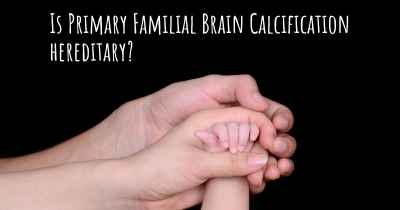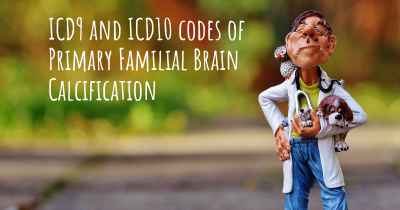Which are the causes of Primary Familial Brain Calcification?
See some of the causes of Primary Familial Brain Calcification according to people who have experience in Primary Familial Brain Calcification

Primary Familial Brain Calcification (PFBC), also known as Fahr's disease, is a rare genetic disorder characterized by the abnormal accumulation of calcium deposits in the brain. These calcifications primarily affect the basal ganglia, which are a group of structures deep within the brain involved in movement control, cognition, and emotion regulation.
The exact causes of PFBC are not fully understood, but research suggests that it is primarily a genetic disorder with an autosomal dominant inheritance pattern. This means that a person only needs to inherit one copy of the mutated gene from either parent to develop the condition. However, in some cases, PFBC can also occur sporadically without a family history of the disease.
Several genes have been associated with PFBC, including SLC20A2, PDGFB, PDGFRB, and XPR1. Mutations in these genes disrupt the normal regulation of calcium metabolism in brain cells, leading to the abnormal deposition of calcium in the basal ganglia and other brain regions. However, it is important to note that not all individuals with PFBC have identifiable mutations in these genes, indicating that there may be other genetic factors involved.
While PFBC is primarily a genetic disorder, environmental factors may also play a role in the development and progression of the disease. For example, certain infections, toxins, or metabolic imbalances could potentially trigger or exacerbate the calcification process in individuals with a genetic predisposition to PFBC. However, more research is needed to fully understand the interplay between genetic and environmental factors in the pathogenesis of PFBC.
The symptoms of PFBC can vary widely among affected individuals, even within the same family. Common symptoms include movement disorders (such as tremors, dystonia, or parkinsonism), cognitive impairment, psychiatric symptoms (such as depression, anxiety, or psychosis), and seizures. The age of symptom onset can also vary, ranging from childhood to late adulthood.
Diagnosis of PFBC typically involves a combination of clinical evaluation, brain imaging, and genetic testing. Imaging techniques like computed tomography (CT) or magnetic resonance imaging (MRI) can reveal the characteristic calcium deposits in the basal ganglia and other brain regions. Genetic testing can help identify mutations in known PFBC-associated genes, although it may not be able to detect all genetic causes of the disease.
Currently, there is no cure for PFBC. Treatment mainly focuses on managing the symptoms and complications associated with the disease. This may involve a multidisciplinary approach, including medications to control movement disorders or psychiatric symptoms, physical therapy to improve mobility, and supportive care to address cognitive impairment.
In summary, Primary Familial Brain Calcification is a rare genetic disorder characterized by abnormal calcium deposits in the brain. While the exact causes are not fully understood, genetic mutations in certain genes are known to be associated with the condition. Environmental factors may also contribute to the development of PFBC. Diagnosis involves clinical evaluation, brain imaging, and genetic testing. Although there is no cure, symptom management and supportive care can help improve the quality of life for individuals with PFBC.








